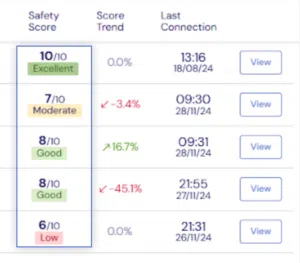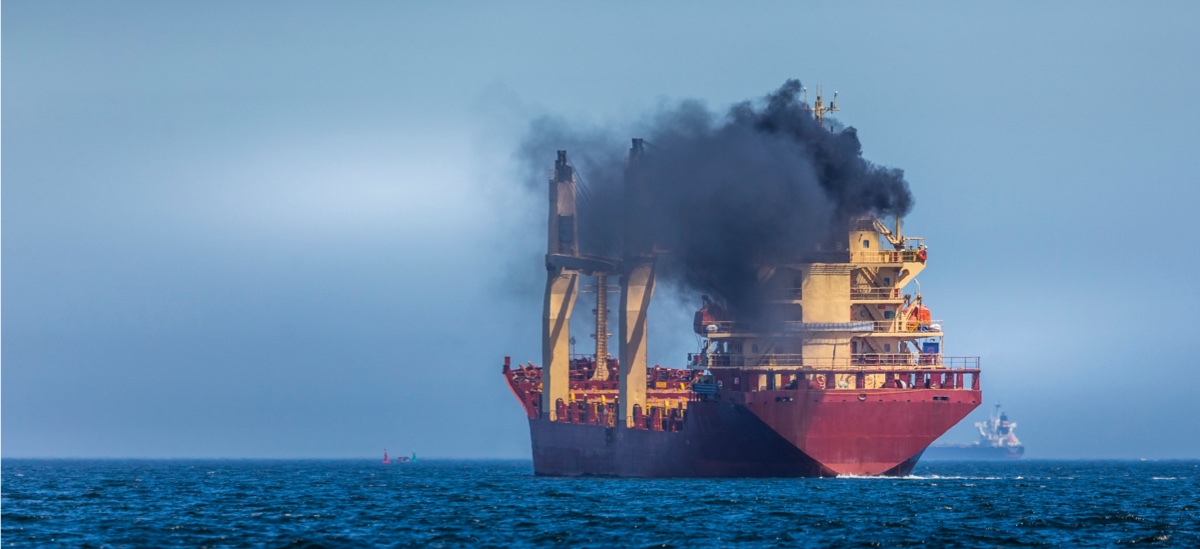How can onshore ship operators effectively ensure their teams are adhering to regulations and navigating safely?
While maritime regulatory frameworks provide a solid foundation for maritime safety, the practical challenges of maintaining compliance often reveal operational vulnerabilities. This article delves into the complexities of the regulatory landscape, the difficulties of meeting compliance standards, and how modern fleet management technologies can provide solutions to enhance both safety and operational efficiency in the maritime industry.
Major Regulatory Frameworks
SOLAS (Safety of Life at Sea), 1974
The 1974 version of SOLAS is the cornerstone of international maritime safety, addressing modern challenges such as ship design, fire safety, and emergency procedures. Over the years, SOLAS has been regularly updated to incorporate advancements in technology and respond to emerging maritime risks.
International Safety Management (ISM) Code, 1998
Introduced in 1998 under SOLAS, the ISM Code mandates that shipping companies establish a Safety Management System (SMS). This system ensures vessels comply with safety and environmental protection measures, focusing on structured risk management, incident reporting, and continuous crew training.
COLREG (Convention on the International Regulations for Preventing Collisions at Sea)
The COLREG framework outlines navigation rules to prevent collisions at sea, such as protocols for crossing, overtaking, and head-on situations. These rules are critical for maintaining safe passage in congested and high-risk areas.
Blind Spots in Maritime Safety Compliance
Despite regulatory frameworks like SOLAS, ISM, and COLREG, ensuring compliance remains a challenge for maritime operators. A significant issue is the disconnect between shore-based teams and onboard crews. According to the World Maritime University, the lack of real-time visibility into vessel operations creates blind spots where risks—such as close-quarters situations, navigational errors, and lapses in collision avoidance protocols—can escalate into serious incidents.
This problem is worsened by delayed or incomplete reporting, leaving operators to rely on assumptions about compliance. Without accurate, real-time data, fleets face increased safety risks, operational inefficiencies, and regulatory penalties. A report prepared for Lloyd’s Register Foundation by the University of Strathclyde highlights that over 90% of less serious occupational accidents are not publicly reported, limiting the industry’s ability to address recurring safety challenges.
Another challenge lies in manual and fragmented compliance processes. Over 60% of maritime operators still use paper-based systems for compliance documentation. These systems are not only prone to errors but also inefficient, resulting in inaccurate records and missed compliance deadlines. Without streamlined tools to validate compliance in real-time, identifying patterns of non-compliance or recurring risks becomes an uphill task, often addressed reactively rather than proactively.
Bridging the Gap with Data and Connectivity
Data-driven technologies and robust connectivity are essential for closing compliance gaps in maritime operations. Real-time data exchange, powered by IoT devices and satellite systems, provides onshore teams with continuous oversight of vessel activities, reducing decision-making time by 25% and enabling quicker safety interventions.
Predictive tools and data-sharing are vital for preventing incidents and operational resilience. Leveraging real-time monitoring allows operators to detect risks such as collision threats or equipment failures before they escalate. Machine learning and satellite technologies amplify these capabilities, offering predictive insights that optimize decision-making and improve situational awareness. According to the Global Maritime Trends 2050 Report these technologies will be critical for optimizing safety outcomes in the maritime sector.
Operational reports underscore the importance of data-sharing in fostering collaboration between onboard crews and onshore teams, closing the longstanding visibility gap in maritime compliance. Automated reporting systems streamline processes for the 60% of maritime operators still relying on manual documentation. These systems improve audit readiness and ensure alignment with key regulations like SOLAS, ISM, and COLREG.
Embracing data-driven solutions enables operators to meet compliance requirements and enhance safety outcomes, underscoring the importance of both maritime situational awareness onboard the vessels and for shore-based teams, who must remain informed about their fleets’ real-time operations to manage compliance effectively.
FleetView: The Future of Safety and Compliance at Sea
Orca AI’s fleet monitoring platform, FleetView, leverages connectivity and data-driven technologies to provide a centralized platform that optimizes real-time monitoring, reporting, and performance across fleets. This comprehensive tool addresses key challenges in maritime safety and compliance through the following core features:
Real-Time Monitoring and Alerts
FleetView offers live monitoring of critical safety metrics, sending immediate, event-based alerts directly to operators, enabling instant action on compliance breaches and safety risks. Its centralized dashboard provides fleet-wide visibility, allowing operators to prioritize high-risk vessels.
Historical Data for Continuous Improvement
FleetView’s historical data supports scenario-based training and long-term performance tracking. Insights into past events help refine protocols, address recurring issues, and enhance fleet safety over time.
Comprehensive Safety Scoring
Orca AI’s proprietary Safety Score evaluates vessel performance using key indicators such as COLREG adherence, minimum distances, event frequency per nautical mile, and historical trends. It helps operators proactively identify risks, investigate declining scores, and implement corrective actions.
Shifting from Reactive to Proactive Maritime Safety
The disconnect between shore-based operators and onboard crews underscores the need for better alignment in maritime safety. Addressing this gap requires not only leveraging data but also ensuring that operational practices are closely aligned with regulatory requirements. By viewing compliance as an opportunity to refine processes and foster accountability, operators can move beyond simply meeting standards to achieving meaningful safety improvements.












